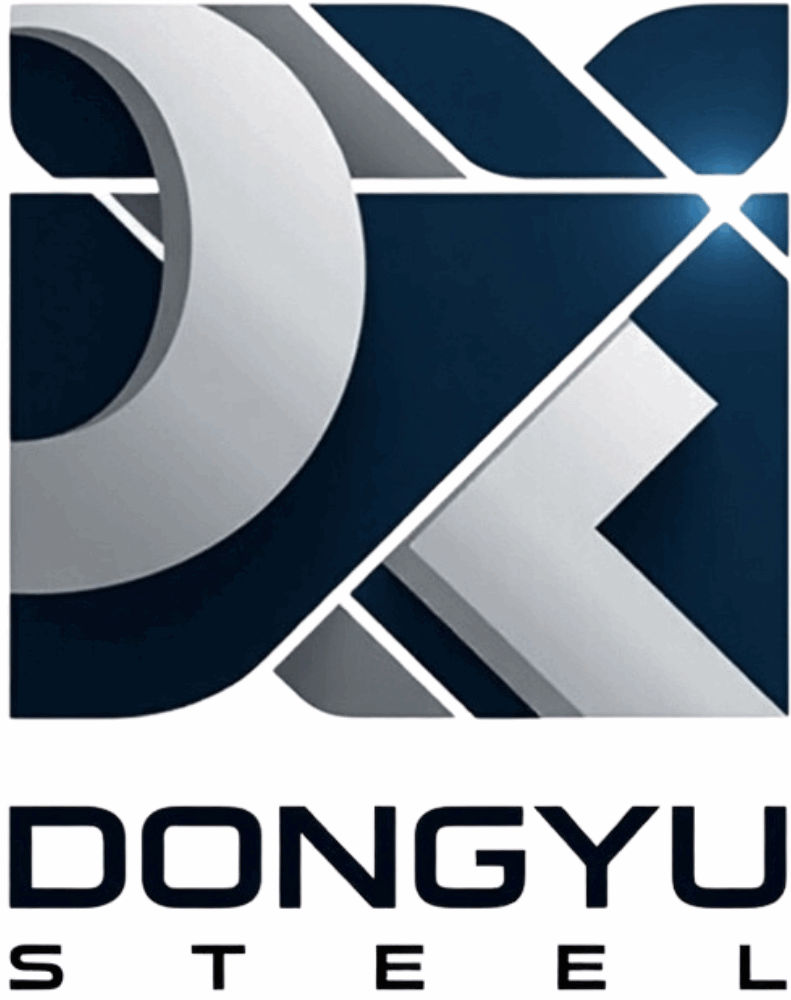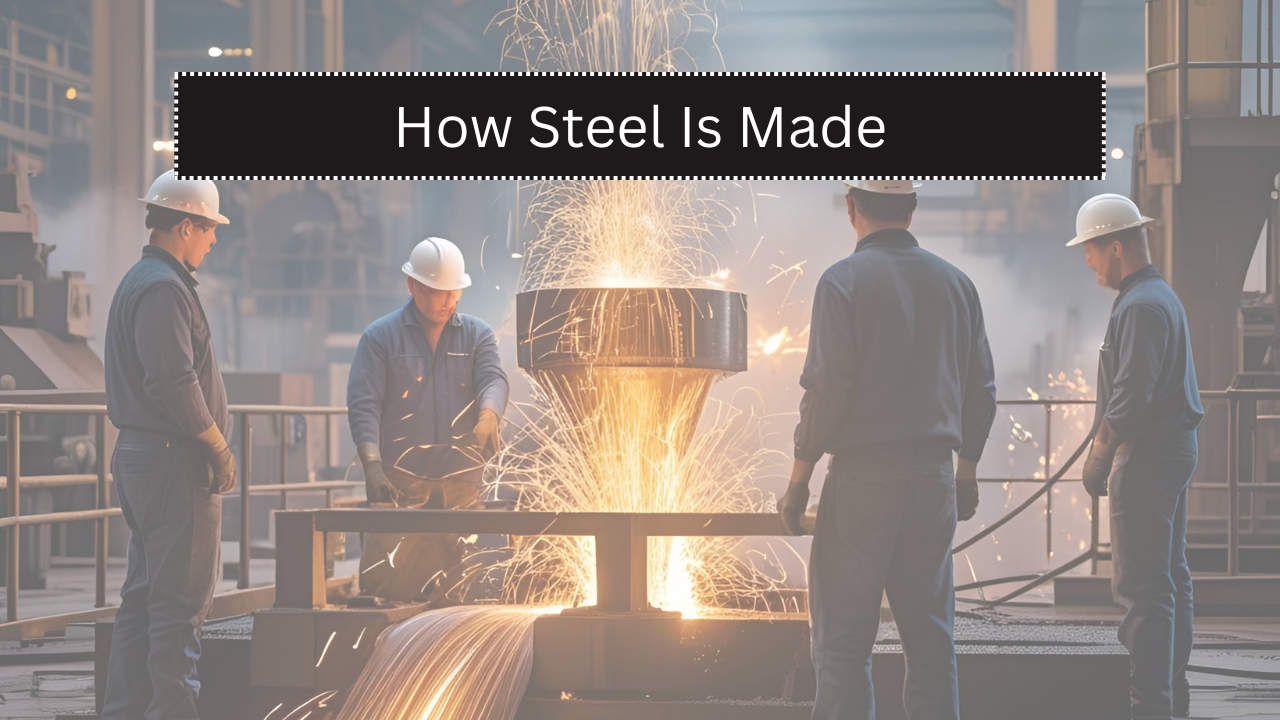Steel plays a crucial role in modern life. From buildings and bridges to cars and appliances, steel forms the backbone of industrial progress. The journey of steel begins deep beneath the Earth’s surface with iron ore and passes through several stages until it becomes the finished, strong, and versatile material we use every day. This article explains the complete process of how steel is made—from raw iron ore to a ready-to-use steel product.
Iron Ore: The Raw Beginning
Iron ore is the primary raw material used to make steel. This ore contains iron combined with oxygen and other elements. To produce steel, the iron must be extracted from the ore.
- Iron ores commonly used: hematite (Fe₂O₃) and magnetite (Fe₃O₄)
- Major iron ore mining countries: Australia, Brazil, India, and China
- The ore is usually mined in open pits
Common Types of Iron Ore
| Iron Ore Type | Chemical Formula | Iron Content (%) | Color |
|---|---|---|---|
| Hematite | Fe₂O₃ | 69% | Reddish-brown |
| Magnetite | Fe₃O₄ | 72% | Black or dark grey |
| Limonite | FeO(OH)·nH₂O | 55% | Yellowish-brown |
| Siderite | FeCO₃ | 48% | Pale brown |
Step 1: Mining and Crushing
- Iron ore is extracted from mines and transported to steel plants.
- The ore is crushed into small pieces to make it easier to process.
- Large crushers and grinders are used to reduce ore to small, manageable sizes.
Step 2: Concentration and Beneficiation
After crushing, the iron content needs to be increased through concentration processes.
- Magnetic separation is used for magnetite ore.
- Flotation and gravity separation help remove impurities like silica and alumina.
- Beneficiated ore has a higher percentage of usable iron.
Step 3: Pelletizing or Sintering
The concentrated iron ore is either converted into pellets or sintered (fused into larger clumps) to prepare it for the blast furnace.
- Pellets are round, marble-sized balls.
- Sintered ore is a mix of iron fines and other materials like limestone.
Comparison of Pelletizing and Sintering
| Process | Shape/Form | Advantages | Used For |
|---|---|---|---|
| Pelletizing | Round pellets | Uniform size, easy to handle | Direct reduction, BF feed |
| Sintering | Irregular porous lumps | Reuses fine waste, improves efficiency | Blast furnace input |
Step 4: Ironmaking in the Blast Furnace
The sintered ore or pellets are loaded into a blast furnace along with coke (carbon-rich fuel) and limestone.
- Hot air is blown into the furnace to initiate combustion.
- Coke reacts with oxygen to produce carbon monoxide.
- Carbon monoxide reduces iron ore to molten iron, also called pig iron.
The limestone helps remove impurities by forming slag, a lighter byproduct that floats on the molten iron.
Step 5: Steelmaking – Turning Iron into Steel
Pig iron contains high carbon and impurities, making it brittle. To make steel, it needs to be refined.
Two main processes are used:
Basic Oxygen Furnace (BOF):
- 70% of world steel is made this way.
- Oxygen is blown into molten pig iron.
- Carbon and impurities are burned off.
Electric Arc Furnace (EAF):
- Often used for recycling scrap steel.
- High-voltage electric arcs melt the scrap.
- Energy-efficient and eco-friendly.
BOF vs. EAF
| Aspect | Basic Oxygen Furnace (BOF) | Electric Arc Furnace (EAF) |
|---|---|---|
| Raw Material | Pig iron + scrap | Scrap steel |
| Energy Source | Oxygen blowing | Electricity |
| Time Required | Faster | Slower |
| Environmental Impact | More emissions | Lower emissions |
| Common Usage | Mass steel production | Recycling-focused production |
Step 6: Secondary Refining (Ladle Metallurgy)
The molten steel from the furnace may still contain unwanted elements. Secondary refining improves its purity and properties.
- Alloying elements like chromium, nickel, or vanadium are added.
- Desulfurization removes sulfur.
- Temperature control ensures steel solidifies at the desired rate.
Step 7: Casting – Forming Solid Steel
Once the chemical composition is correct, molten steel is poured into molds to cool and solidify.
Two methods of casting:
- Ingot Casting – Traditional method, used for specialty steel.
- Continuous Casting – Modern method that forms long steel slabs, blooms, or billets.
Types of Steel Casting Products
| Product Type | Shape/Form | Common Uses |
|---|---|---|
| Slab | Rectangular | Plates, coils, automotive sheets |
| Bloom | Square or rectangular | Beams, rails |
| Billet | Smaller square | Wire rods, bars |
Step 8: Hot and Cold Rolling
The steel is still not ready for use. It must be shaped and sized correctly.
- Hot rolling is done at high temperatures. Steel is more malleable.
- Cold rolling is done at room temperature. Produces a smooth finish and tighter tolerance.
Step 9: Finishing and Coating
After rolling, steel is cut, shaped, or coated based on final requirements.
- Coatings like zinc (galvanizing) prevent rust.
- Surface treatments improve appearance or corrosion resistance.
- Steel can be painted, oiled, or polished.
Step 10: Distribution and Use
Finished steel is then shipped to industries for manufacturing products:
- Construction: Beams, bars, roofing sheets
- Automotive: Chassis, doors, engine parts
- Appliances: Refrigerators, washing machines
- Tools: Blades, hammers, industrial machines
Applications of Finished Steel
| Industry | Steel Use |
|---|---|
| Construction | Structural steel, reinforcement bars |
| Automotive | Car bodies, frames, engine components |
| Energy Sector | Pipelines, turbines, transformers |
| Consumer Goods | Cookware, appliances, electronics |
| Transportation | Railway tracks, shipbuilding, aircraft |
Future Implications
The process of making steel is a complex journey that transforms raw iron ore into one of the world’s most vital materials. Each step, from mining to rolling, plays a vital role in ensuring the final product is strong, durable, and useful. Steel’s adaptability and strength continue to make it a foundation of global development and infrastructure.

